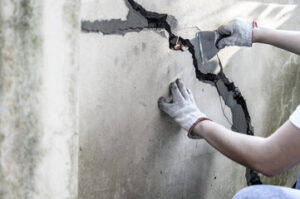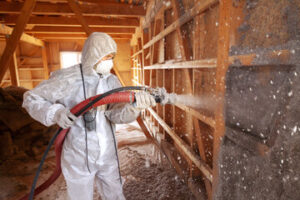Charleston Siding Repair is more than just an exterior touch-up. It protects the structure from wind, moisture, and insects. When siding fails, deeper layers become vulnerable. Timely repairs restore both beauty and protection.

Small cracks in siding may appear harmless at first. But these often signal internal shifts or pressure points. Ignoring early damage can lead to rot and insulation failure. Repair work prevents the spread of costly complications.
Moisture infiltration is the most dangerous issue caused by damaged siding. When water enters gaps, it settles behind the panels. This creates the perfect environment for mold, mildew, and decay. Repairing these breaches stops deterioration at the source.
Nails or fasteners that loosen over time create movement between panels. This leads to misalignment and visible seams. Realigning and refastening panels returns the structure to its tight seal. It also prevents wind uplift and rattling during storms.
Siding corners are particularly prone to damage from impact and weather. If these areas split or shift, they create entry points for pests and moisture. Corner trim repair strengthens visual framing and reinforces the joint system. Without it, the surrounding siding begins to detach.
Warped siding panels change how water drains from the structure. Water flows behind the panels instead of downward. This undermines the waterproof barrier and stains the foundation. Repairs involve heat reformation or full panel replacement depending on severity.
Color fading signals UV damage that may weaken material composition. Discolored sections may become brittle and prone to cracking. Spot repair combined with coating restores appearance and adds UV protection. Color matching ensures the home retains its cohesive look.
Impact damage from storms or stray objects causes dents and punctures. These must be repaired quickly before the layers beneath absorb moisture. Filler, patching, or replacement helps restore strength and shape. Consistent thickness ensures the wall maintains even performance.
Mismatched siding repairs lead to visible inconsistency on the structure. Color, grain, and material differences become more noticeable with time. Accurate identification of the original siding type is crucial. Repairs that blend well preserve both value and aesthetics.
Siding beneath windows requires extra attention due to water runoff. Over time, the drip edge may fail and affect the panels below. Proper repair includes reinstallation of flashing and caulking. These layers redirect water and prevent infiltration.
Insect damage shows up as small holes, tunnels, or soft patches. Termites, ants, or beetles often chew through wooden components. Repairs involve removal of infested sections and treatment before patching. Failure to treat the cause leads to repeated repairs.
Loose caulking or sealant breaks the protective barrier around joints. Water enters through these gaps and causes unseen problems inside the wall. Removing and reapplying high-quality sealant is part of standard siding repair. Proper adhesion extends the life of adjacent materials.
Vertical buckling indicates problems with installation or heat expansion. Panels press against each other and lift away from the wall. Cutting relief gaps or reinstalling with spacers corrects this tension. Balanced spacing allows materials to expand without warping.
Interior wall stains may point to siding failure outside. Moisture travels inward through hidden cracks and gaps. Repair involves tracing the water source to its origin. Addressing both interior and exterior issues restores the home’s balance.
Fungus or moss growth along the siding base shows poor drainage. Constant dampness affects the siding’s lower edge and invites breakdown. Cleaning, resealing, and adjusting grading prevent recurrence. Repairs often include improved gutter downspout placement.
Siding panels that sag or lean may suffer from broken clips or warped underlayers. When panels lose support, they become vulnerable to shifting. Repairs involve resetting the support structure and securing new brackets. The restored alignment renews the wall’s strength.
Vibration from HVAC units or nearby construction may loosen siding. Over time, repetitive shaking causes gaps to form. Repairs include shock-absorbing materials and tighter fasteners. Eliminating motion preserves the long-term position of each panel.
Rodents sometimes chew through soft siding or nest behind damaged panels. Repair requires both removal and block-off solutions. Sealing the space with chew-resistant material adds an extra layer of protection. Post-repair monitoring ensures they don’t return.
Bubbling on the surface of siding may indicate trapped moisture or heat damage. When air or steam builds behind panels, it causes swelling. Repair involves removing the panel and improving ventilation. Flat reinstallation maintains the building’s smooth profile.
Soundproofing is affected when siding loosens or degrades. Gaps in the structure allow external noise to enter more freely. Repairs that seal the envelope also restore acoustic protection. This improves comfort, especially in noisy environments.
Vertical siding systems suffer damage differently than horizontal ones. Rainwater travels straight down and settles between seams. Repair strategy adjusts for this direction of flow. Sealants and flashing must redirect water without creating blockages.
Heat-absorbing siding colors expand more than lighter shades. Over time, this causes warping if not properly spaced. Repair involves material substitution or strategic trimming. Matching the thermal expansion rate keeps the surface flat and secure.
When panels are painted, cracks or peeling finish reveal underlying damage. Paint failure may come from trapped moisture or improper priming. Repairs require stripping, sealing, and refinishing in multiple layers. A proper paint job also adds weather protection.
The insulation behind siding degrades when exposed to weather through cracks. Gaps allow wind to remove heat from inside the home. Repairing panels helps restore the thermal envelope. Energy efficiency improves once these breaks are corrected.
Older siding materials may become brittle and snap under pressure. Repair involves careful removal to avoid breaking adjacent pieces. New sections are integrated to minimize stress on fragile joints. The process requires patience and knowledge of aging behavior.
Sudden shifts in wall shape may suggest structural settling. This movement affects siding alignment and tension. Repair must include assessment of framing and load support. Otherwise, cosmetic fixes won’t last beyond seasonal cycles.
Siding near decks or garden beds suffers from splashback and moisture exposure. Soil rises against the surface, creating a damp environment. Repair includes moisture barriers and clearance adjustments. Elevating siding above grade protects it from decay.
Expansion gaps that disappear over time signal potential compression. Without room to shift, siding buckles during temperature swings. Repair involves spacing correction and sometimes trimming excess material. Proper breathing room extends siding life.
Siding installations often fail at transition points between materials. Where siding meets stone or brick, expansion behaves differently. Flexible connectors are added during repair to bridge these materials. Matching the movement prevents cracking or gapping.
Nail pops appear as raised circles or visible holes on the surface. They weaken panel stability and invite moisture inside. Repairs involve removing loose nails and filling the hole properly. Anchoring with corrosion-resistant fasteners prevents reoccurrence.
Overpainting siding hides flaws instead of correcting them. Trapped moisture beneath paint leads to blistering and rot. Repair requires stripping, drying, and repairing the original material. Painting should always follow complete surface restoration.
Unusual odors indoors may stem from mold behind damaged siding. The smell often enters through vents and wall cavities. Repair involves removing panels and drying the interior wall. Cleaning and sealing eliminate odor sources permanently.
Strong winds test siding attachment strength. If panels shift or rattle during storms, the anchoring system has weakened. Refastening with wind-rated clips improves storm resistance. Reinforcement keeps the siding in place during harsh weather.
Solar reflections from nearby windows can cause heat damage. Concentrated sunlight warps siding over time. Repairs include material swap or adding heat deflectors. Protecting siding from external sources ensures uniform aging.
Streak marks down the siding surface suggest uneven drainage. These marks indicate water has been trapped or redirected poorly. Repairing involves cleaning, sealing, and rerouting runoff. Smooth drainage protects both siding and foundation.
Siding overlaps must remain tight and even. When panels pull apart, they expose the wall underneath. Repair involves reseating the entire section to maintain the water seal. Proper overlap maintains both appearance and strength.
In regions with freeze-thaw cycles, ice wedges can form in siding cracks. These cycles expand the damage each season. Repair includes crack sealing and water diversion methods. Preventing refreezing stops future splits from forming.
Power washing can dislodge loose panels if done improperly. Excessive pressure forces water into sealed gaps. Repairs involve reattaching panels and sealing seams. Controlled cleaning methods are safer for delicate siding types.
Wind-driven rain affects siding at unusual angles. It enters upward-facing cracks and sideways gaps. Repair solutions use angled seals and protective contours. This adjustment resists weather conditions that typical installations overlook.
Siding repair enhances more than just curb appeal. It contributes to insulation, security, pest control, and structural integrity. A well-maintained exterior reflects the health of the entire building. Early intervention always costs less than delayed response.
Every repair made with intention adds years to the structure’s lifespan. With modern materials and precise techniques, damage no longer spells replacement. Siding repair protects from the inside out. It’s a solution that brings strength, style, and stability to every wall.








